Cacao has carved out a variety of unique identities.
It didn't happen overnight, and in fact, the idea has been floating around the industry for several years now. But without a long history of unique origin (like in wine), or strong public knowledge (like in coffee), the cacao community has been slow to designate nomenclature for cacao regions & their accompanying terroir. Is it time we changed that?

Jump To
How Chocolate is Like Wine
We've identified nearly a dozen different types of cacao, studied the effect of altitude and latitude upon fat content, tested the micro-nutrients of hundreds of samples, and yet we have no designating body checking that the cacao comes from where it says it does. There are designating bodies for wine established in many countries throughout the "Old World," deterring potential imitators from passing off cheap grapes for more famous ones.
Yet I and many others would argue that this is unnecessary bureaucracy, not in small part because so few people are familiar with where good cacaos tend to come from. The inherent transparency in which this industry has grown up has seen to the uselessness of terroir designations. Chocolate is emphatically not wine or coffee, and for the most part, it doesn't pretend to be.
Is it necessarily a choice between becoming more like coffee or more like wine, or can cacao create its own blend? Take the terroir concept from wine and combine it with the connection to the land we find in coffee. The possibilities for cacao are endless, and our job is merely to find our place in it, chocolate maker, consumer, cacao farmer, or anything in between.
What makes more sense for cacao is to use the structure of the wine and coffee industries to build our own system for cacao brands. The International Chocolate Awards began to include farmer & cacao awards a few years ago. Many makers take pride in using the beans of the established cacao brands, meaning that the demand for reputable cacaos is undeniable. But there's also the HCPS for heirloom cacao varietals, though they need to fund themselves & therefore charge for their testing. The FCCI is grading cacaos practically and on a widespread scale, but it, too, needs to be funded.
Then there are disputes over what constitutes a cacao's growing region and what to name them, since ascertaining the varietal for each batch of cacao would be time-consuming and petty. Chocolate also doesn't fetch the same prestige or price as wine. Yet like in wine and coffee, cacao's many unique identities are celebrated through the ingredients' origins.
So if this industry is to continue to grow in size, as it will, it must maintain the ethics of transparency upon which it was built.
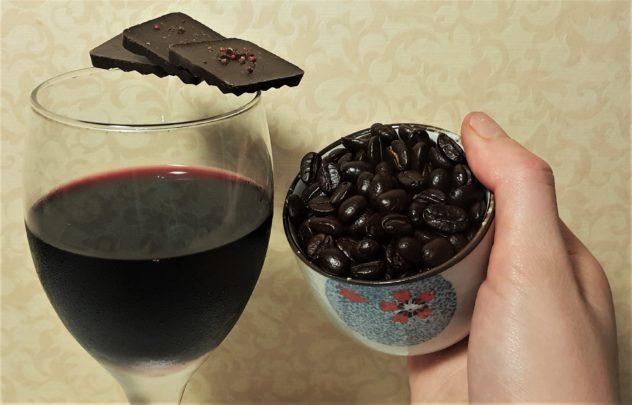
Belize: A Cacao Case Study
For centuries, cacao farmers in Belize have been growing and harvesting cacao, only to ship it off to who-knows-where to be turned into who-knows-what. And this was okay for them, until the cacao market stayed stagnant while Belize's overall economic growth continued. Cacao farmers were making the same income they always had, but the prices of everyday goods were increasing and it was harder to survive off of cacao each day. Those who had cacao were considering or already replacing their cacao trees with more profitable cash crops, like timber or palm trees. The opportunity cost of cacao farming became too high, and it's hard work, to boot.
So their children moved to the cities to look for work, while older generations remained on the farm. That's how it remains in much of the world today. From Guatemala and Ghana to Vanuatu and Vietnam, older generations farm the land & children and grandchildren live in the city. But not in Belize. Not anymore. Several years back, in 2010, a woman named Emily Stone partnered with local cacao farmers and a few other hardworking non-Belizians to form Maya Mountain Cacao (MMC). Maya Mountain expanded into Guatemala with Cacao Verapaz just 3 years later, now all under the well-known umbrella of Uncommon Cacao.
But this is not the story of some white savior coming in and fixing everything; the Belizian and Guatemalan farmers did the work themselves, opted in themselves, and contributed only what they chose to. For all the running around, collecting, fermenting, drying and selling that MMC does, the farmers have spent years raising the cacao beforehand, and another several days harvesting it. Everything the farmers have accomplished has been so inspiring to me that before I even started this site, I wrote a final paper for university on the MMC cooperative.
This is one of the earliest models for cacao brands (and a VERY successful one I might add).
But why is the story of a Belizian farmer any different from those of modern cacao farmers all around the world? Why should it be different? There are other English-speaking countries where both cacao production & the economy are on the rise, like Tanzania or India or the Philippines, for example. So how can we bring the cacao brand concept to them, so that they can bring their cacao to the world?
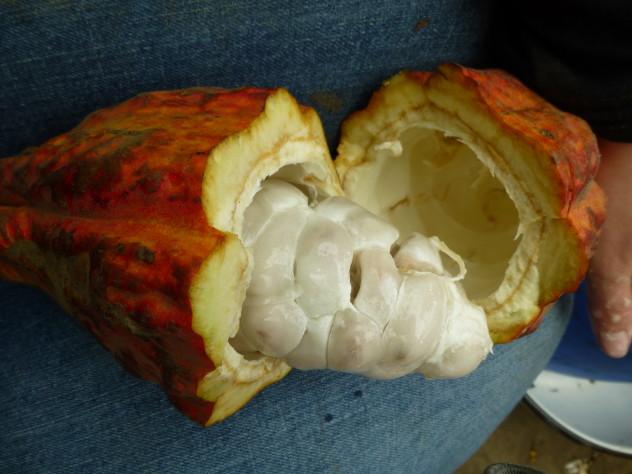
Defining a Cacao Brand
The average age of farmers is over 50, and many have not even finished high school. Unlike chocolate makers, cacao farmers are lifers. Most wouldn't even consider themselves cacao farmers, either, since cacao may only be a relatively small, seasonal portion of their income. It by no means covers the bills. But unlike current chocolate making endeavors, small scale and relatively low barrier to entry, cacao farming is strenuous. It requires 2-5 years of wait time before trees even bear fruit, depending on how you grow them. Afterwards, young trees must be shaded and pruned and harvested ever few weeks to ensure that cacao pods are collected only at peak ripeness.
This means that unless you have a lot of beans, all the subsequent steps of chocolate making, those which ready the cacao for chocolate making, will be difficult or impossible to do. Beyond that, unless you're working directly with a chocolate maker or starting to make chocolate yourself, your beans are going to fetch a commodity price on the market (at time of publication, around $2700USD per metric ton). This means that after all your hard work, for every pod you raise, collect, transport, unpack, ferment, dry, and sell, you'll make less than a dollar. Without a sufficient number of cacao trees, the startup costs of time and labor don't even make sense.
But for all our talk about flavor notes and fine chocolate, for most of us, what it always comes down to is the farmers. We want to make sure that our chocolate is fair, and happy. So why not organize a system for training farmers in a way that makes the cacao happy? It's much easier said than done, but so is chocolate making. Value-added chocolate making has its place and is an immensely important and growing type of chocolate, but that can't be all there is. Some farmers just want a more central place to sell their cacao when they have it, whether it's a small seasonal bonus of sorts or their main source of income.
As long as their crop is up to snuff, that's something that should be available to them. More and more tropical farmers are beginning to plant cacao trees on their property, in pursuit of a little extra cash. Does this make them cacao farmers? How many trees do you have to own to be a cacao farmer? How often do you have to harvest? Do you even have to be the owner of the land you work on? What if you farm several other crops? So in the spirit of answering questions, let's define what a cacao brand is.
A cacao brand is a company made up of a group of farmers from one or a group of plantations who harvest, ferment, dry, and sell their cacao together under one brand name (currently, often the name of one farm or region in which the cacao is grown).
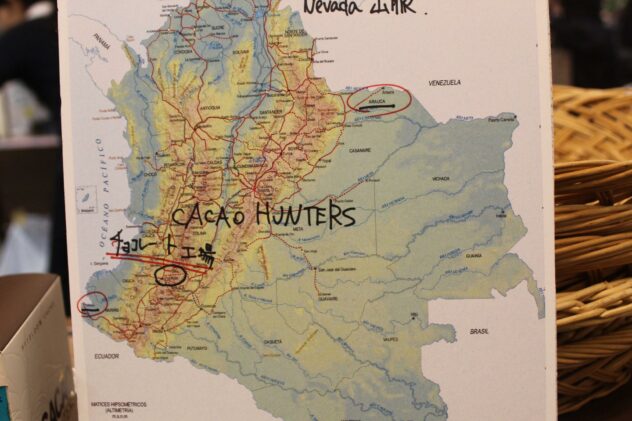
Cacao Brands in 2018
I'm big on giving examples, so these are some of the bigger cacao brands currently on the market, most of them co-ops. Some you may not have even thought of as necessarily being a brand, but I promise you that the businesses behind them already thought of them as such, with a reputation being built & maintained.
- Maya Mountain (Belize, Uncommon Cacao)
- Kokoa Kamili (Tanzania)
- Oko Caribe (The Dominican Republic, Uncommon Cacao)
- PISA (Haiti, Uncommon Cacao)
- Ucayili River Cacao (Peru)
- Marañón (Peru)
- Mindo's Cloud Forest (Ecuador)
- Akesson (Madagascar)
Future Cacao Brands
Cacao brands could be an alternative for the makers who begin using a particular cacao just because it's from a unique origin. Especially newer makers tend to look for something to make them different, and to sell bars. But using a brand name cacao could be a way to garner that attention without buying low quality cacao (and contributing to the continued sale of such cacao), simply for the wow factor.
With more overall stability in income comes more room for creativity and potential maker input on how beans are fermented, shipping materials, drying methods, etc., chocolate makers can create their own unique flavors through collaboration, similar to the direct trade movement many makers are currently using.
A cacao brand doesn't have to be a big player, either, merely a collective entity with which makers can collaborate and negotiate. Name brand cacao is a natural outgrowth of the craft chocolate industry's expansion. Just like the woman selling pastries at the local bakery, a cacao seller who picked their fruits by hand and shares their face with the public is immediately more valuable and trustworthy than a faceless corporation selling bags of beans. The tree-to-bar chocolate makers popping up all around the world have proven that, and in fact, many of them likely started off selling beans directly to chocolate makers.
A cacao brand could even sell only to itself, as most all of the cacao farmers/chocolate makers on Hawai'i can attest to. As the regions in which cacao is grown become wealthier and more expensive to live in, cacao growers will need to earn more money in order to live and continue to do things like send their kids to school, eat nutritious food, and spend their leisure time on enjoyable activities.
Countries throughout the Americas are particularly ripe for this type of growth, Costa Rica and Ecuador, especially. In the very near future, chocolate makers will need to cut down on shipping, both because of cost and environmental impact. The future's cacao brands will sell so much more than just cacao.
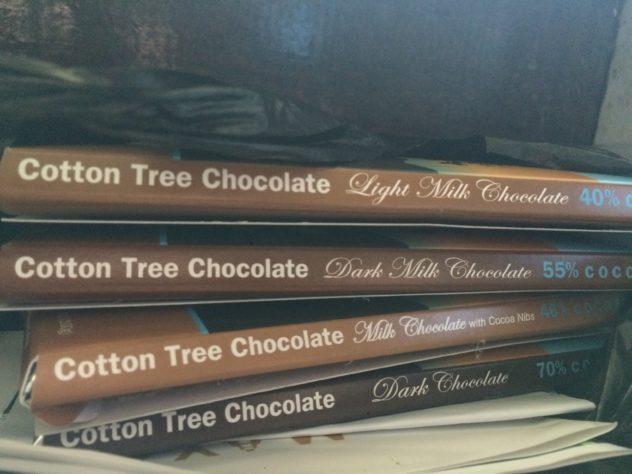
Why Create Cacao Brands?
When this epiphany came over me about cacao brands, it seemed so obvious that I wondered why we weren't already talking about it. So many of the farmers I've met and gotten to know have been working to turn themselves into one, whether they realized it or not. Many owned farms that were starting to produce more & more cacao each year, and were looking to sell what they couldn't make into chocolate.
Starting a chocolate company is damned expensive, and requires even more money and patience if you live in the tropical climate in which cacao grows. What's more, there are thousands of small batch chocolate makers at different levels and stages of their business, but in terms of established cacao co-ops and brands, there are only maybe... a dozen? Two dozen, tops?
But the majority of farmers who receive guidance on fermentation and growing practices are working with one maker or brand in particular, or may be the lucky recipients of the small amount of government assistance. But even these numbers are small compared to the millions of cacao farmers around the world. Looking at it from the farmers' perspectives, cacao is an unstable crop with currently low prices and oft-unpredictable harvests.
If we can stabilize two of those three big considerations for farmers, then an uncertain market suddenly becomes more reasonable to stay in. The related idea of joining a co-op is to allow farmers to sell when they have quality product, and give the power of fermenting, drying, and selling the cacao to the buyers (preferably the makers, themselves).
The benefit of this is clear to farmers: higher prices and less legwork. But what if you have a bigger farm? Well then, you have more room to play, creatively speaking. Having a brand for your cacao could increase its market stability and your income, as long as what you're selling is of consistent quality (the basis of any good brand is trust). So these are seven reasons why cacao brands are the future of chocolate, whether we've noticed the trend or not.
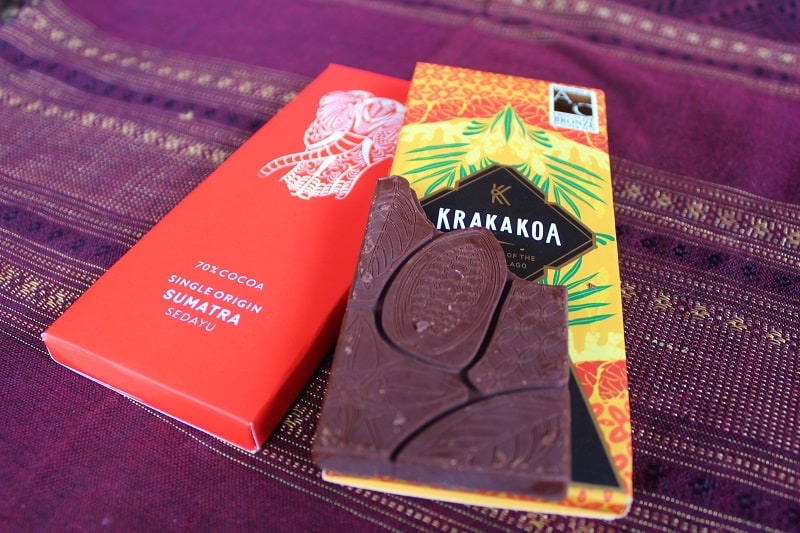
Cacao Brands Would...
- create and maintain good reputations for particular farmers and co-ops, regardless of the reputation their growing region or country may have in the industry (consider the generally bad reputation that African cacao has in the industry, but think of some of the delicious bars made from that cacao— where did it come from?).
- mediate fluctuations in quality between the farms in a particular area, by motivating all growers to raise the quality of their trees & harvested pods up to the same standard, in many ways also stabilizing the cacao supply.
- raise the income from cacao by raising consistency in processing (and in quality, as mentioned above). All chocolate makers agree that cacao from different places has different flavors, so why not seek stability in those flavors?
- make it easier for farmers to to deal directly with makers of varying sizes by cutting out the middleman, if they so choose— as a brand of their own, they now have a business with which makers can come in direct contact.
- give farmers a more direct link to consumers and vice versa, by lending the transparency and brand name recognition that makers currently enjoy.
- put more knowledge in the heads of farmers, who generally aren't in contact with other farmers around the world, by connecting them with others in the industry (not just chocolate makers). By having a consistent market, they can also take a more creative approach to their business, maybe setting aside a portion of each harvest to experiment with.
- hopefully teach farmers that they can start their own value-added cacao business one day, whether that means making chocolate or expanding their cacao brand towards cacao products and cacao/chocolate tours of their farms, finding ways to make use of lower quality or older trees while new ones are being planted.

How they do this is up to the farmers themselves. I can't and won't speak to the situation in every country. But it would be a big mistake to assume that the creation of such businesses is too big a task or too shrouded in bureaucracy to happen any more than it already has. To make such an assumption would be to underestimate the willpower and resourcefulness of cacao farmers, especially those of the younger generations.
However, no matter where you go, this will be a long and slow process, one that can be made easier with the help of everyone in the chocolate industry. Cacao brands are good for all of us, especially as cacao farming becomes more and more expensive in terms of the opportunity cost for younger & better-educated generations of farmers.
This is a need that I see in the industry, just as one guest long ago remarked about chocolate bar wrapping in an episode of The Well Tempered Podcast. It may be a training program, a book, a push for governmental change to be begun in places where farmers don't even realize it's a possibility. There are problems, of course: language barriers, governmental restrictions on how cacao is sold, unpredictable weather patterns, import restrictions for new cacao varietals, diseases, lack of proof on the end of the market, start-up costs... but these are merely challenges.
They are not reasons to give up.
This will not be a quick-to-catch-on trend. It will take work from all sides, but as this industry grows, this is what we will need. If you want to get into the chocolate game and make a real difference, have a greater impact, then found, invest in, or begin planning a farmer co-op and cacao brand. Good chocolate starts with good cacao; amazing chocolate is crafted from the bean to the bar— so go make that amazing cacao.
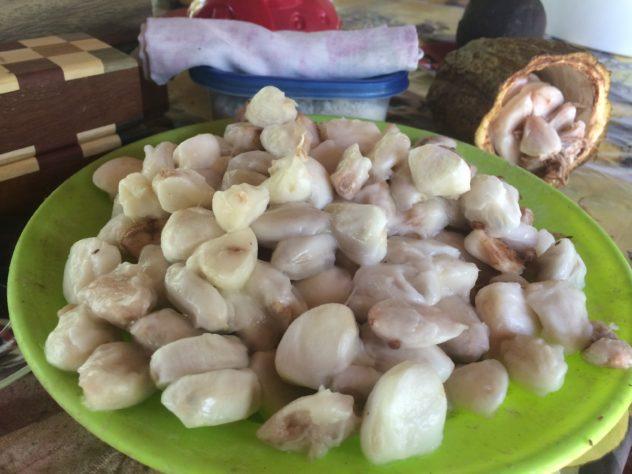
My major goal with this site is to get everyone who reads it to eat better chocolate. Not everyone is going to start buying craft chocolate or picking a favorite cacao brand, but everyone can improve their habits— especially if they know why they should. So no matter where you go, eat good chocolate, and remember that behind every delicious bar is a proud farmer (or a few hundred), and a slowly increasing awareness of their role in the industry.

















Edita
I was in Costa Rica a year ago and was introduced by the tour guide to Cacao Sweety. I’m trying to purchase here in the states and search all over the internet and could not find any. I would Like to know if you’ve heard of this brand. They’re one of the best I’ve ever tasted and dying to get my hands on it.
Max
I'm afraid I've never been to Costa Rica nor heard of this brand, but maybe one of the craft chocolate retailers who sources bars from this region would know? I'd ask around at Caputo's!